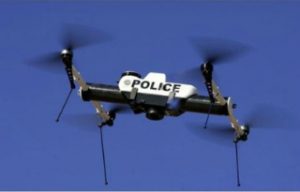 Life is kind of funny, depending on how you look at it. When it comes to asking your local citizens how they feel about the purchase and use of a drone or UAS (unmanned aircraft system). As for initial expense, no one really complains. But, when it comes to actually deploying and using a drone this seems to be a much bigger issue. Ranging in size from a pack of cigarettes up to large military craft, these devices are equipped with a camera that streams in real time. This is where the problem comes in.
Life is kind of funny, depending on how you look at it. When it comes to asking your local citizens how they feel about the purchase and use of a drone or UAS (unmanned aircraft system). As for initial expense, no one really complains. But, when it comes to actually deploying and using a drone this seems to be a much bigger issue. Ranging in size from a pack of cigarettes up to large military craft, these devices are equipped with a camera that streams in real time. This is where the problem comes in.
We Value Our Privacy
Here in the U.S., we have enjoyed more freedom from government surveillance of any kind than just about any other country in the world. We value this privacy and will literally kill to defend it. The problem is the average citizen is afraid (and in some cases rightly so) that they are being watched, even when they are not doing anything wrong.
But let the drone fly over their backyard and the phones at the local P.D. with angry people screaming about being recorded their rights being violated. So how do you overcome such concerns? After all, no one complains when the drone helps find a lost child or a senior with Alzheimer’s disease who has wandered off, so what’s the deal?
Explain the Benefits
One of the best ways to turn the opinion of your local citizens is to host a series of Town Hall type meetings open to everyone. Explain that using a helicopter to search costs thousands of dollars, not to mention the multi-million-dollar cost of the aircraft, paying a pilot, and so forth. Drones cost less to buy than two hours’ worth of flight time. The helicopter should be reserved for taking supplies and personnel to the location.
The UAS requires an officer with specialized training, but this cost far less than getting a commercial pilot’s license. To be sure, the UAS has limited uses in comparison to the chopper, but each has its uses. They are often the ideal tool to help search for a lost person, or as the case was in Florida to catch a fugitive who was hiding in the swamp using a thermal imaging camera.
Fire departments can also use a drone to help them track wildfires in order to better direct resources, including law enforcement officers in order to better protect everyone in town. Officers can use the video feed from the UAS along with a grid map to help them sweep more accurately through buildings, reducing their risk of being shot or killed.
The most important thing to keep in mind is that the more benefits of using a drone as part of your department’s efforts to make the town a safer place to live, the more likely you are to turn the tide of opinion. Keep in mind that no matter how hard you try and how obvious you make it that your town should have had a drone years ago, there will always be those who you will never convert. Focus on those who are willing to see the benefits far outweigh any risk of abuse or invasion of privacy.
